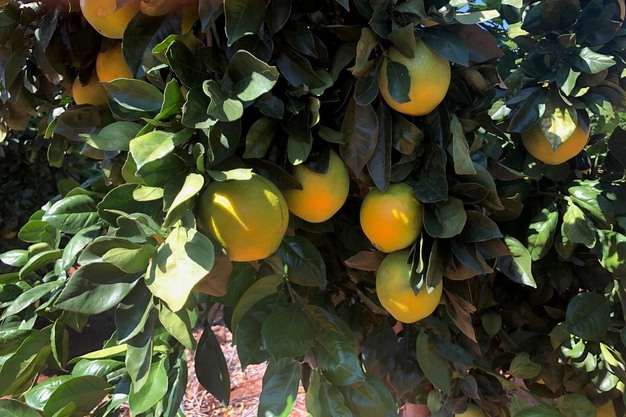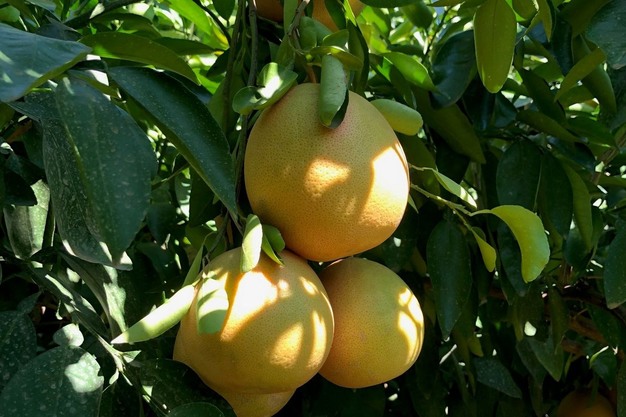The southern hemisphere import citrus deal is gradually coming to an end. With only less than two months to go until the U.S. domestic citrus season starts, summer imports will wrap up by the end of October. Tariffs have largely determined the season. "They were applied during the season and played a big part as a result," says Miles Fraser-Jones with Fresh Del Monte.
Tariffs South Africa
Citrus imports from South American countries Peru, Chile, and Uruguay were subject to a 10 percent tariff and the effect on the season hasn't been that drastic. The initial threat and the reality of a 30 percent tariff for South Africa on the other hand, played a big role. The tariff became effective on August 8, in the midst of the country's season. Growers, shippers, and logistics companies worked hard to ship as much citrus volume to the U.S. as possible prior to the tariff going into effect. As a result, 75 percent of the crop had shipped by the first week of August.
 © Fresh Del Monte
© Fresh Del Monte
Gap in arrivals
"The country certainly took a risk by shipping additional volume," commented Fraser-Jones. Did it pay off? "Stock has built up and larger volumes of fruit have been waiting in the warehouse. However, only by the end of the season will we be able to tell whether it was worth shipping so much extra volume during a short period of time." In the last few weeks, there has been a break in arrivals from South Africa, and the next shipment won't arrive until September 22. It's one of the first shipments arriving under the 30 percent tariff. The big gap in arrivals will hopefully clear up inventory and create more favorable market conditions for the remaining weeks of the season.
Poor quality early clementines
August is traditionally one of the most difficult months for fresh produce and this past August was no different. Produce sales were down across the board as a result of schools being out for summer. With the additional shipments from South Africa, inventory built up, which made for an even more challenging month. Coupled with that, the start of the southern hemisphere import citrus season was challenged by poor-quality clementines from all countries of origin. "It is very important to kick off the season with high-quality fruit, but instead high volumes of poor-quality fruit were shipped." This had an effect on the rest of the season. In the U.S., fresh produce is relatively expensive and in view of the current economic conditions, consumers expect to receive high quality. "The W. Murcott, Tango and Nadorcott varieties that followed were of better quality, but it took time for consumers to regain trust in the quality," Fraser-Jones mentioned.
Small size oranges move fast
Large size oranges (40, 48, and 56s) from all regions are in abundance, and the fruit is moving slowly. Smaller fruit on the other hand, is facing a good market and moving much quicker. "Smaller fruit is very suitable for bags and as a result, inventory on smaller sizes from 64s to 113s is becoming tighter." Later season orange varieties such as Navel Lates and Midknights will hopefully move better now that kids are back in school.
 © Fresh Del Monte
© Fresh Del Monte
Balanced volume from South America
Although South America's citrus volume to the U.S. has been balanced, the continent has witnessed pressure from South Africa's large volumes. Overall, Peru had a good citrus crop and increased their volume to the U.S. market this past season. Chile is shipping large volumes of late mandarins that are expected to arrive into November. A cold snap in the country about two weeks ago may result in isolated quality issues, but is not expected to have a significant impact on the late season.
Start of domestic season
By mid-October, California is expected to start its citrus harvest. The early fruit usually stays on the West Coast, but the state will start shipping into retail by early November, which is considered a normal start. By mid-October, South Africa will end its shipments to the U.S. and around that time, most importers will start cutting off imports to make room for California fruit. Expectations of California's season are high as growing conditions have been phenomenal.
Fruit Attraction
Miles will be attending Fruit Attraction in Madrid from September 30 until October 2. Visit him and the Fresh Del Monte team at Stand 10D12 - Pavilion P10.
 For more information:
For more information:
Miles Fraser-Jones
Fresh Del Monte
Tel: +1 (856) 693-2217
[email protected]
www.freshdelmonte.com
